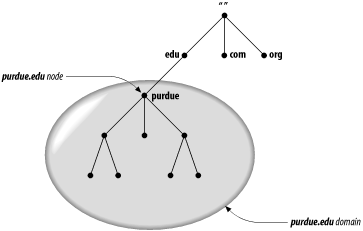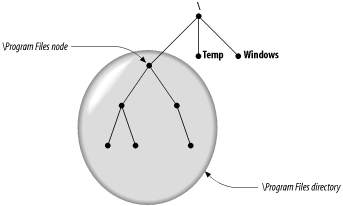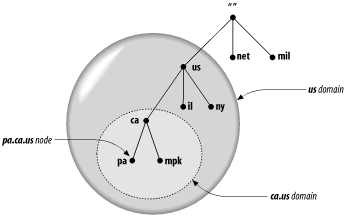Domains
A domain is simply a subtree of the domain namespace. The domain name of a domain is the same as the domain name of the node at the very top of the domain. So, for example, the top of the purdue.edu domain is a node named purdue.edu, as shown in Figure 2-3.
 |
Likewise, in a filesystem, at the top of the \Program Files directory you’d expect to find a node called \Program Files, as shown in Figure 2-4.
 |
Any domain name in the subtree is considered a part of the domain. Because a domain name can be in many subtrees, a domain name can also be in many domains. For example, the domain name pa.ca.us is part of the ca.us domain and also part of the us domain, as shown in Figure 2-5.
 |
So in the abstract, a domain is just a subtree of the domain namespace. But if a domain is simply made up of domain names and other domains, where are all the hosts? Domains are groups of hosts, right?
The hosts are there, represented by domain names. Remember, domain names are just indexes into the DNS database. The “hosts” are the domain names that point to information about individual hosts, and ...
Get DNS on Windows Server 2003, 3rd Edition now with the O’Reilly learning platform.
O’Reilly members experience books, live events, courses curated by job role, and more from O’Reilly and nearly 200 top publishers.

